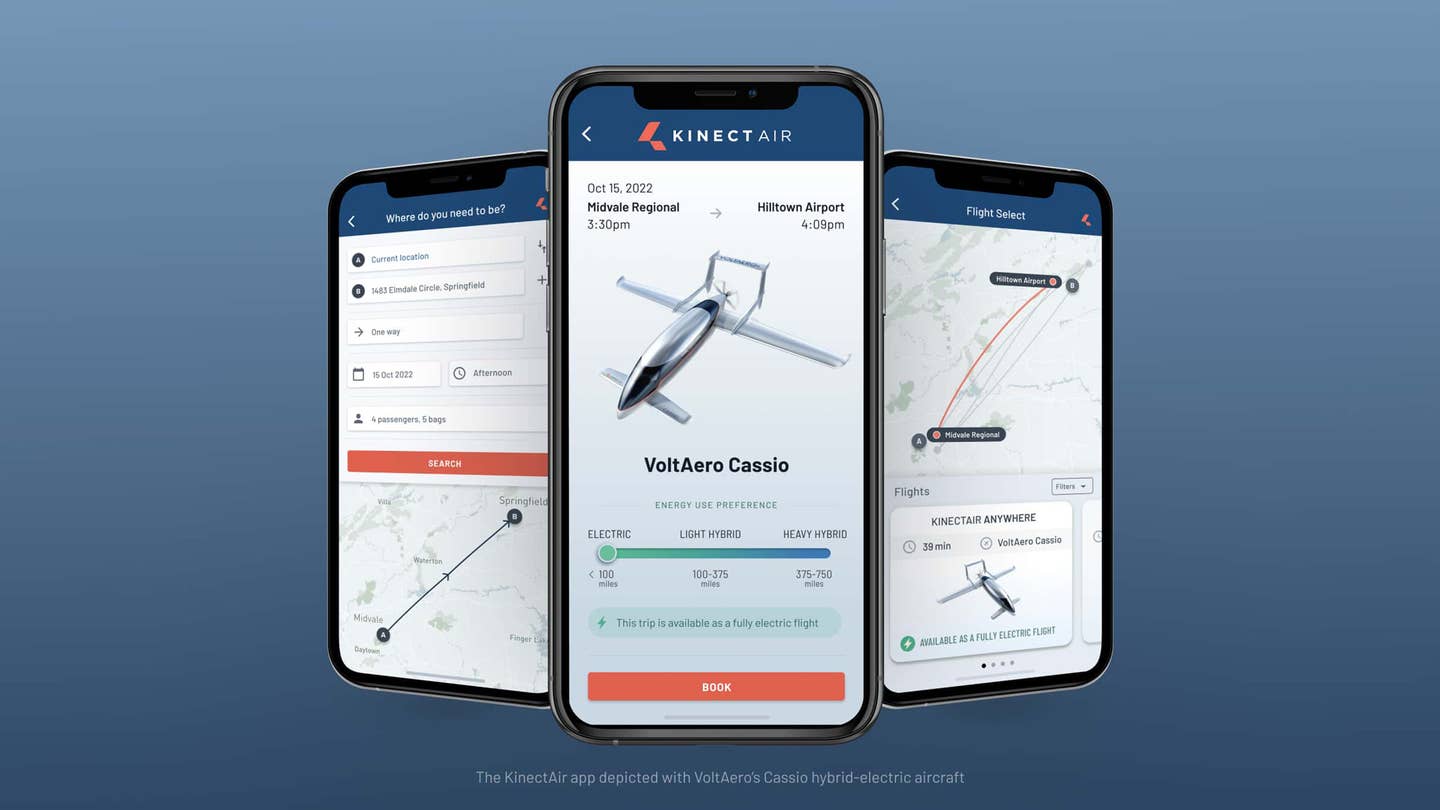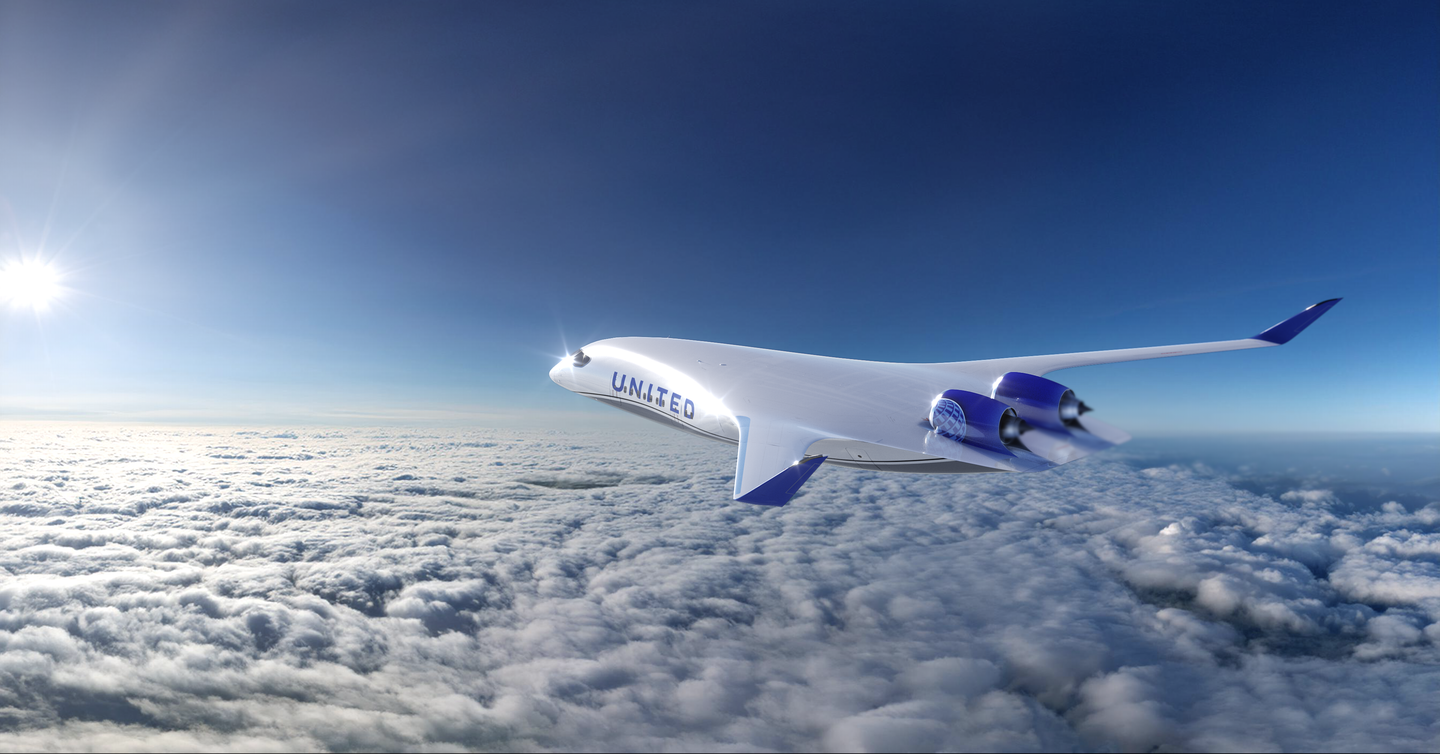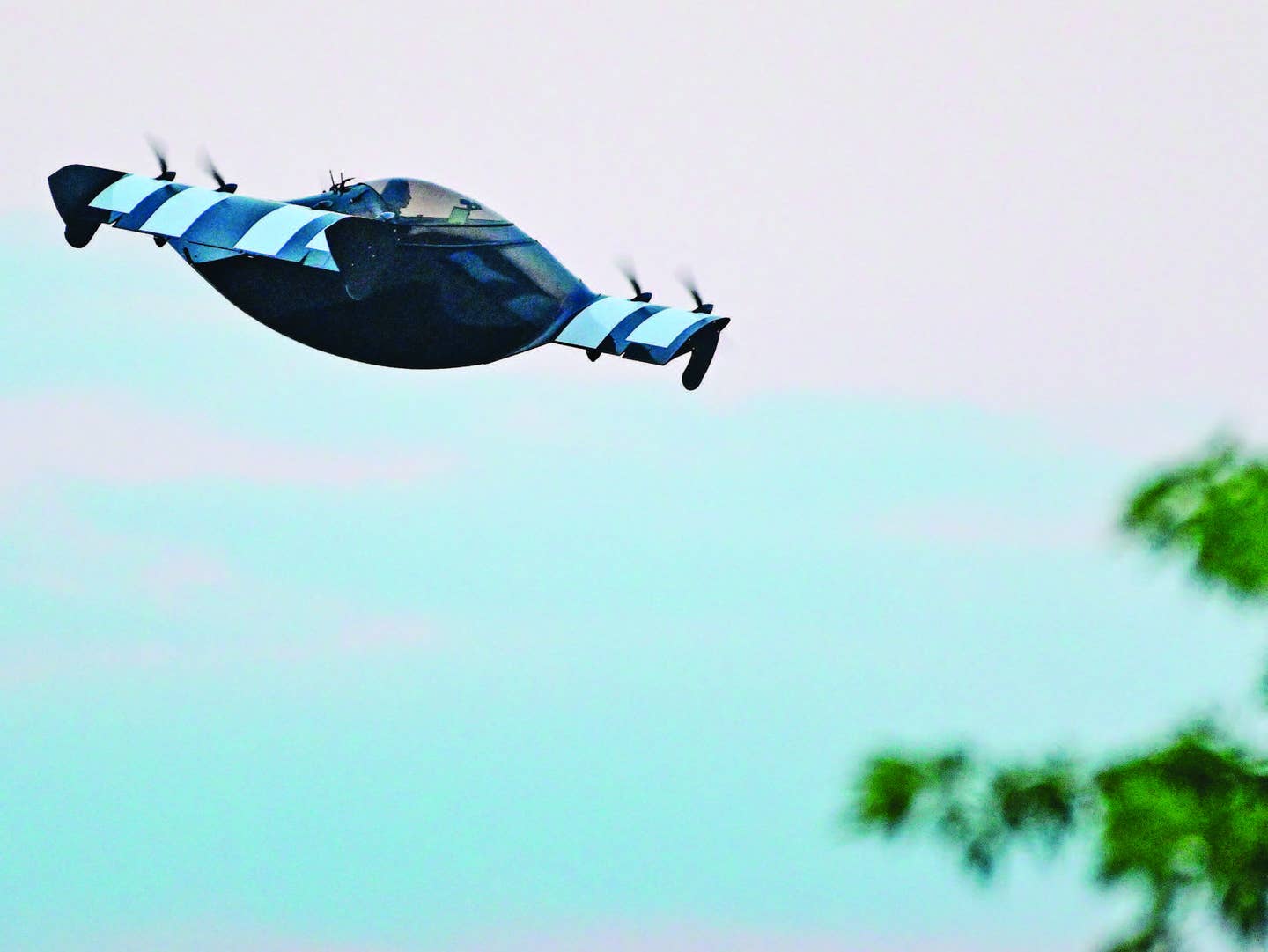
The KinectAir app will use artificial intelligence to enable an on-demand regional flight network. Courtesy KinectAir
In a move that the companies believe will help provide solutions to regional air mobility, VoltAero, developers of the Cassio hybrid-electric aircraft, has joined forces with KinectAir, a software company that is creating “a flexible on-demand flight network utilizing an artificial intelligence-enabled smartphone application,” according to a press release on July 15.
VoltAero, based in Médis, France, has been working on a series of airplanes using the company’s proprietary hybrid-electric power module and a “sleek” design. It projects that the Cassio model will cruise at 200 knots with a range of roughly 800 statute miles—and the ability to take off and land in less than 1,800 feet. VoltAero plans three versions, with four to 10 seats, optimized for regional air service and able to use runways at most public airports in the United States and elsewhere globally. First deliveries are expected in 2022.
KinectAir’s app gives users the ability to “order flights directly from their nearest airfield,” according to the company. “Utilizing its fleet of leased and fractionally-owned aircraft, KinectAir’s artificial intelligence engine then balances supply and demand for air travel, giving passengers control over their choices—both economically and environmentally.”
“With Cassio aircraft in our fleet, it completes the KinectAir vision for democratizing personal air mobility. Being mindful and intentional about the need for connectivity, and the ability to fly sustainably, is in our company DNA,” said Jonathan Evans, CEO of KinectAir, based in the US. “We will be able to offer a clean, quiet, and intelligent regional air service to move people to where they need to be. Partnering with VoltAero during Cassio’s development also allows our software platform’s functionality to be integrated directly into the aircraft’s ‘intelligent cockpit,’ which will enable a two-way interface for the rapid exchange of intelligence between the network and the aircraft as a node.”

Sign-up for newsletters & special offers!
Get the latest FLYING stories & special offers delivered directly to your inbox






